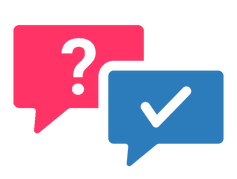1. Answer the End Hunger Question and let's get started.
|
By answering “YES” to The End Hunger Question – Do you believe that no one in America should go hungry? – Americans can join the national movement to end hunger in the US by 2030. We believe that the goal of ending food insecurity and providing healthy nutrition for all American families and individuals is within reach, but only if there is sufficient public will to make it a national priority.
This is NOT a fundraising appeal — we’re building a citizens’ movement and want you to join. Adding your name to the EndHungerUSA2030 movement is free and easy, and you can help make this movement hard to ignore. And we’re serious — at least 10,000 EndHungerUSA2030 members in every Congressional district will get lawmakers’ attention so they will do more to protect America’s most vulnerable families. Our initial target is 5 million Americans signing up for the movement and sharing their commitment with others. We can do this! Make your voice heard by answering the End Hunger Question: |
2. On Thanksgiving Day, November 28, 2024,
join thousands of social media influencers and help kickstart a national conversation:
join thousands of social media influencers and help kickstart a national conversation:
Post with a purpose. Make sure to use the #endhungerusa2030 hashtag,
so we can track your efforts and measure the impact of "The Greatest Day in Social Media."
so we can track your efforts and measure the impact of "The Greatest Day in Social Media."
|
EndHungerUSA2030 is a national call to action to eliminate U.S. hunger by engaging citizens in a national conversation, promoting a positive change, inviting participation and action, and generating the non-partisan public will to end hunger.
We're declaring Thanksgiving Day (November 28, 2024) as the "Greatest Day on Social Media," and inviting hundreds of thousands of social media influencers and content creators, corporations, schools and universities, organizations, fraternities and sororities, faith communities, and all Americans to "post with a purpose" on that day to connect the Thanksgiving traditions of gratitude, family, and unity with the need to make sure everyone in America has access to nutritional food. This is especially urgent now. While there was increased support during the COVID-19 pandemic for many families who had lost their jobs because of the lockdown, that support is now ending, and we are seeing food insecurity increase in the last year. According to the US Department of Agriculture (USDA), at least one million more families experienced significant hunger in 2022 compared to the previous year. The food insecurity rate for households with children was 17.3% in 2022, up from 12.5% in 2021 and a high since 2015. And some elected officials are trying to reduce food assistance even more. It’s critical that we don’t slide backward and make food security even more difficult for struggling families. That’s why the EndHungerUSA2030 movement is so important. What is missing is the public will — millions of Americans engaging in the conversation and taking a public stand to end hunger in the world’s richest country. We are building a popular movement to bring attention to the issue of food insecurity in America, highlight the negative impact increasing food insecurity will have on our young people, and generate the media attention it deserves. Elected officials typically pay close attention to those groups who can get (or keep) them elected because they actively voice their concerns and show up to vote. We believe that the number of Americans who care about our fellow citizens and want US hunger to finally end is larger than any other constituency in America. But most Americans have never been asked to make the end of US hunger a national priority…until now. As Americans choose to join the EndHungerUSA2030 movement, they can add their individual voice to support the national movement of people committed to ending hunger in America by 2030. Every “yes” moves us closer to the goal. |










